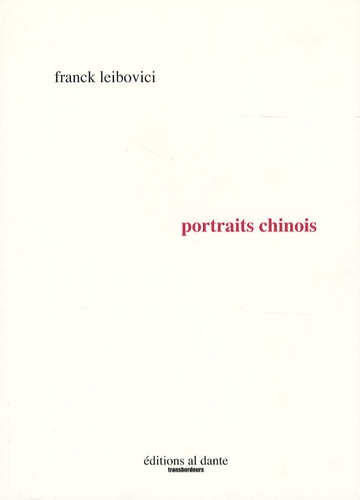Hot content in a cool container
A note on Vanessa Place and Franck Leibovici
By Martin Glaz Serup
Elsewhere
I've written about documentary and pseudo-documentary in what I call postproductive witness literature.[1] In short, the article is concerned with how some poetry works with the testimony through its use of post-productive strategies; how, through the use of
various documents, it develops a certain type of investigation of history, place,
voice and site. I believe that the
documentary versus the pseudo-documentary
approach could show to be two main traditions within the post-productive
witness literature. The documentary post-produces already existing cultural material
by making new paths and readings through the sources; which, for example, could
be court records, newspapers or different texts found on the internet. The pseudo-documentary post-produces material
from events that - based on all we know - easily could have taken place, but
didn’t necessarily. It is so to speak,
post-producing an already accepted, recognizable and recognized cultural
discourse. What both approaches do - amongst other things - is examine our
conceptions, prior knowledge of and expectations to the sites and phenomena
being (pseudo-)documented.
 |
| Hodell's Orderbuch |
 Examples of the
documentary tradition, that I'll focus on here, count amongst others the American
writers Charles Reznikoff and Vanessa Place, and the French writer Franck Leibovici. The same year as Orderbuch was published in Sweden, Reznikoff's
Testimony was published in two
volumes in America. The book is based on court documents documenting
stories of violence in the United States between 1885 and 1915. Reznikoff
edited the original documents, added linebreaks, omitted parts, but he (almost)
didn't add anything to them. Ten years later, in 1975, he famously published Holocaust. Holocaust is basically using the same formal strategies and methods
as Testimony and is based on courtroom
accounts from the Nüremberg Trials and Eichman's trial in Jerusalem.
Examples of the
documentary tradition, that I'll focus on here, count amongst others the American
writers Charles Reznikoff and Vanessa Place, and the French writer Franck Leibovici. The same year as Orderbuch was published in Sweden, Reznikoff's
Testimony was published in two
volumes in America. The book is based on court documents documenting
stories of violence in the United States between 1885 and 1915. Reznikoff
edited the original documents, added linebreaks, omitted parts, but he (almost)
didn't add anything to them. Ten years later, in 1975, he famously published Holocaust. Holocaust is basically using the same formal strategies and methods
as Testimony and is based on courtroom
accounts from the Nüremberg Trials and Eichman's trial in Jerusalem. Franck Leibovici is
himself referring to Reznikoff as one of the major figures in what he calls this pretty unknown tradition, which is
the tradition of refusing to write 'creatively,' choosing,
arranging, editing instead – in order words: post-producing. Leibovici names this tradition one of Poetic documents.[2]
Franck Leibovici is
himself referring to Reznikoff as one of the major figures in what he calls this pretty unknown tradition, which is
the tradition of refusing to write 'creatively,' choosing,
arranging, editing instead – in order words: post-producing. Leibovici names this tradition one of Poetic documents.[2]
When I was in
Paris in September for the Poets &
Critics @ Paris Est-seminar on and with Vanessa Place, I also reread
Leibovici's Chinese portraits (2007)[3].
The sourcematerial of the book is taken from different media reports about
hostagetaking in the recent wars in Iraq and Afghanistan.

It consists of
excerpts of newsstories, newstelegrams and first person accounts from
survivors, cut up in different ways providing many angles, many kinds of
language, all of it presented fragmented and in flux with big parts left out and
others repeated several times, not following a conventional chronology, not
supplying a proper background for 'the story' or the persons in them, not always
clearly marking who’s talking and from where and why and to whom. But all of it
pertains to an overall context of (at least) two specific mediated conflicts and
not the least: to the form in which the media are covering these conflicts.
Leibovici's text necessarily distributes the readers' attention towards the way
these conflicts are mediated and how little is really needed to be told before
we already know the narrative; the readymade mechanisms and stories that present themselves to us in relation to hostagetaking in Afghanistan and Iraq at the
beginning of the current century; almost as if this specific kind of mediation
and narration was the neutral, objective way to see and understand this
conflict. One of the things that we become very much aware of, when encountering
Leibovici's work, is that the mediation have their very own aesthetics and that
this aesthetics is not only tied to the time in which it's produced and to the
technology that brings the stories to us, but also to the content itself. Each
topic, if that's not too vague a word, is given a specific kind of tone or
voice, almost a certain sentiment, and that's one of the reasons, I think, that
all the literary empty space in Chinese Portraits, the white pages, everything that's not there, carry as much information as word-filled pages; the voids are telling but
what are they saying? I think one of the major effects of Leibovici's work is
to distribute a certain kind of attention - or maybe just attention, to begin
with - towards the form through which a certain context, a certain set of facts, manifests itself. Hence the
possibility to ponder upon an empty page.
 Something similar
happens in Statement of Facts (2010)
by Vanessa Place. Here it's the language of law that's being scrutinized; the
language of the court. Statement of Facts
is the first part of Tragodía, a
planned trilogy where Place, herself an appellate attorney, appropriates her own
legal writing and republishes as poetry her speeches for the defence of different
sex offenders. What we have is radical transcripts; everything is there,
including legal notes and references like "(RT 2:677-680, 2:687-688,
2:690-691, 2:1541, 2:1554-1555. 3:1812-1813, 3:1831-1832, 3:1852-185)" and
"(CT 26-37)". Only the names of
the victims and certain details that could identify them too easily have been altered.
Transferred from the courtroom to the poetrybook, the rhetoric of witnessing is
no longer performative, at least not in the same manner as before; what is
it then? Reading the book calls for many questions; maybe the first and
foremost should be: what is a fact? And what does a fact actually tell us? When
is it important? Whose decision is it? It might be true that a particular appellant is unemployed, for
instance, but is that relevant to mention in a case that's about alleged sexual assault? And what exactly does it suggest when such fact is being
presented prominently as the very last thing being said in the presentation
of the events, the so-called statement
of facts?
Something similar
happens in Statement of Facts (2010)
by Vanessa Place. Here it's the language of law that's being scrutinized; the
language of the court. Statement of Facts
is the first part of Tragodía, a
planned trilogy where Place, herself an appellate attorney, appropriates her own
legal writing and republishes as poetry her speeches for the defence of different
sex offenders. What we have is radical transcripts; everything is there,
including legal notes and references like "(RT 2:677-680, 2:687-688,
2:690-691, 2:1541, 2:1554-1555. 3:1812-1813, 3:1831-1832, 3:1852-185)" and
"(CT 26-37)". Only the names of
the victims and certain details that could identify them too easily have been altered.
Transferred from the courtroom to the poetrybook, the rhetoric of witnessing is
no longer performative, at least not in the same manner as before; what is
it then? Reading the book calls for many questions; maybe the first and
foremost should be: what is a fact? And what does a fact actually tell us? When
is it important? Whose decision is it? It might be true that a particular appellant is unemployed, for
instance, but is that relevant to mention in a case that's about alleged sexual assault? And what exactly does it suggest when such fact is being
presented prominently as the very last thing being said in the presentation
of the events, the so-called statement
of facts?
 Vanessa Place and Franck Leibovici are two very different poets; but the books I've
mentioned here are both part of the same tradition; the tradition of documentary
post-productive witness literature. They display the same way of working with
the material, they share the same basic methods of radical mimesis in the shape
of appropriations, and the same curiosity in investigating how cultural form
affects cultural content - to use this fairly suspicious dichotomy - and
vice versa. They both address extreme violence and devastating atrocities in a
very distanced and cool manner. Or more bluntly put and with the words of Vanessa
Place in September at Paris Est
Marne-la-Vallée: "What
interests me is what happens when you put a hot
content in a cool container." Maybe this is done to enable us to change focus
a bit, to be able to let it oscillate between form and content, to see the
context; for instance, the context and system of various representations of atrocities. Knowing that these representations - in their original context
and time, before lapsing into poetry - often have a performative
quality in the sense that they have an immediate impact. With the examples, here, of a specific kind of military and political
engagement or of a verdict. On a metaphorical level they're not all too
different from each other.
Vanessa Place and Franck Leibovici are two very different poets; but the books I've
mentioned here are both part of the same tradition; the tradition of documentary
post-productive witness literature. They display the same way of working with
the material, they share the same basic methods of radical mimesis in the shape
of appropriations, and the same curiosity in investigating how cultural form
affects cultural content - to use this fairly suspicious dichotomy - and
vice versa. They both address extreme violence and devastating atrocities in a
very distanced and cool manner. Or more bluntly put and with the words of Vanessa
Place in September at Paris Est
Marne-la-Vallée: "What
interests me is what happens when you put a hot
content in a cool container." Maybe this is done to enable us to change focus
a bit, to be able to let it oscillate between form and content, to see the
context; for instance, the context and system of various representations of atrocities. Knowing that these representations - in their original context
and time, before lapsing into poetry - often have a performative
quality in the sense that they have an immediate impact. With the examples, here, of a specific kind of military and political
engagement or of a verdict. On a metaphorical level they're not all too
different from each other.
As I see it, one of the main projects that Leibovici, with his Chinese portraits, and Place, with her Tragodía-trilogy, both have embarked on, is to try to develop a new form, another one, another way to tell stories, to investigate life and society more truthfully. An attempt at developing an adequate form of realism, a radical mimesis through which we get closer when describing the world as it is. I see that attempt, that research going on very clearly in contemporary Conceptual Poetry; a will to impart the sensation of things as they are perceived and not as they are known, to quote the Russian formalist Viktor Shklovsky from his famous essay Art as Technique (1917). One of the methods of Conceptual Poetry in this case - to see the world as it is - is to delve into how the world is being mediated. The demanding challenge for the writer, then, is how not to simply reiterate this mediation. How to destabilize it ever so slightly, to make it strange in the Schlovskian sense, instead of reproducing it, so what is already known can be perceived as it was for the first time. When Leibovici cuts up and leaves out seemingly random parts of the documentary material he's using, Place does the opposite: she radicalizes documentary practice by using everything. Leibovici's texts have too little, Place's have too much.
Thus, using such cool containers, they let us access their hot content.
Martin Glaz Serup was born in 1978 and has published six children’s books, most recently an illustrated story entitled When granddad was a postman (2010), three chapbook-essays, as well as six collections of poetry, most recently the long poem The Field (2010), also published in the USA (2011) and forthcoming in Finland and Sweden (2012). Serup is the former founding editor of the Nordic web-magazine for literary critism Litlive and the literary journal Apparatur; he is the managing editor of the poetry magazine Hvedekorn. He has been teaching creative writing at The University of Southern Denmark and at the writer's school for children's literature at The University of Aarhus and is now writing a PhD at the University of Copenhagen. In 2006 Serup received the Michael Strunge Prize for poetry and in 2008 he received a Gold medal from The University of Copenhagen for his dissertation on Poetry and Relational Aesthetics, now a book due to come out with the University Press of Southern Denmark. He is blogging at www.kornkammer.blogspot.com and www.prmndn.blogspot.com.
http://artsandculturalstudies.ku.dk/staff/?id=213860&f=3&vis=medarbejder 
unseren Deutsch -Content-Schriftsteller bietet freie Schreiben , Lektorat , Übersetzungen, Deutsch -Blogging, Nische Schriftsteller , SEO, Social-Media- Inhalte & consulting .
ReplyDeleteI think you provide best transport services.Thanks for sharing this informative blog.
ReplyDeleteOut of Gauge cargoes & Dangerous Goods transportation
Thanks so much for posting a lot of this awesome content! Looking forward to checking out more.
ReplyDeleteCustoms Clearance & Less-than Container Load services
Your blog is really helps for my search and amazingly it was on my searching criteria.. Thanks a lot.
ReplyDeletewarehouse Streamlining & Air freight services
Wish you best of luck for all your best efforts.
ReplyDeleteCustoms Clearance & Less-than Container Load services
Nice blog..!!! It is good to have most of these articles around to maintain the regular flow of information. Help people that no one could do it later, good work!
ReplyDeletewarehouse Streamlining & Air freight services
Hello, I love reading through your blog, I wanted to leave a little comment to support you and wish you a good continuation. Wish you best of luck for all your best efforts.
ReplyDeleteFull Container Load services & Cross Border Trucking
I think you provide best transport services.Thanks for sharing this informative blog.
ReplyDeleteบาคาร่า
gclub จีคลับ
gclub casino
ปรับรูปหน้าเรียว
ReplyDeleteฉีดหน้าเรียว ลดริ้วรอย เป็น
ต้องการ
หน้าเรียวทำเป็น
ยังไง
คนไม่ใช่น้อย
อาจ
กำเนิด
ปัญหา
นี้
รวมทั้ง
การฉีดลดหน้าเรียวด้วยโบท็อกก็เป็นแนวทางการ
รักษาที่ทำเป็น
ง่าย โดยไม่ต้องผ่าตัด
สารารถยนต์
ช่วยลดลางเลือน
ริ้วรอยแล้วก็
ร่องลึกได้ภายในช่วงเวลา
เร็ว
ได้ผล
การดูแลรักษา
ที่น่าพอใจ
ละสร้างความมั่นใจและความเชื่อมั่น
ให้กับผู้มีปัญหาได้อย่างดีเยี่ยม
โบท็อค pantip
โบท็อค ลดกราม